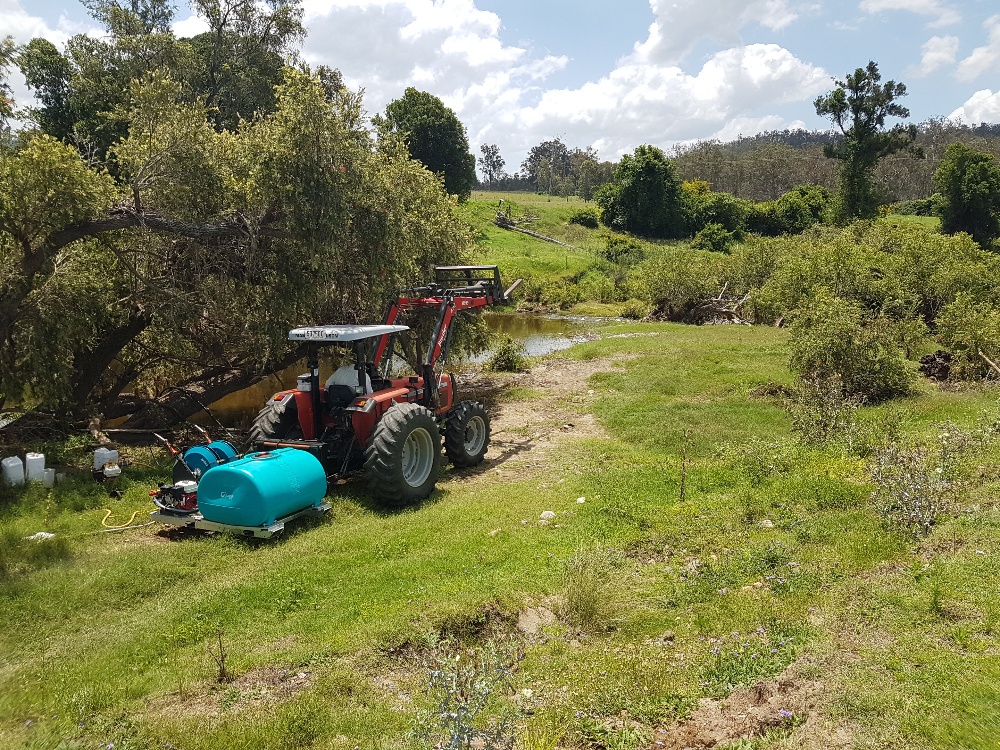Whether they are poisoning your livestock, prickling your feet or they just plain look ugly, weeds can be the ruin of pastures and backyards alike.
Naturally, weed issues are highly localised and it does also depend not only on your kind of pasture, but what the surrounding environment is like – some weeds spread via waterways, others by air, and others by wildlife.
The Australian Government defines weeds as:
"a non-native species which, when introduced into the natural environment, are detrimental to our native plants, animals and ecosystems broadly."
Invasive Plants, can spread very rapidly and have negative impacts on our environment & economy. It is estimated that weeds cost Australian farmers around $1.5 billion a year in weed control activities and a further $2.5 billion a year in lost agricultural production.
Weeds reduce farm productivity by invading crops, smothering pastures and in extreme cases, can harm livestock. Weed contamination can include:
- Fireweed is known to be poisonous to livestock, causing liver damage
- Grain milled with Saffron Thistle results in discoloured flour
- Animals that eat specific weeds such as Parthenium, product tainted meat and milk
- Silverleaf Nightshade can be toxic to animals with symptoms of bloating, trembling, loose faeces, nasal discharge, salivation and breathing difficulties
- Paterson's Curse irritates the udders of dairy cows and can kill horses
- Hemlock can be lethal to both stock and people
Many of these plants were first brought to Australia deliberately and some are even still grown in gardens for display. The issue we have, is when they spread beyond where they’re purposefully sown that they become weeds. Keeping in mind, plants that are perfectly safe to plant in one part of the country can be an environmental or agricultural disaster in another, so it is imperative research is conducted before you start planting.
More information on what is a weed in your area is available from local councils, state or territory weed management agencies and from nurseries and other plant retailers.
FOR EFFECTIVE AND FAST WEED CONTROL
THE SPRAYSCOUT
Our most nimble sprayer yet, the SprayScout has been designed to enable you to access those hard to reach locations. Made from highly durable yet lightweight materials, it can fit comfortably on the back of an UTV or dual cab ute, giving you the spray-power you want and the mobility you need.
A great online tool you can use to help identify weeds is by visiting http://www.environment.gov.au/biodiversity/invasive/weeds/. This has an A-Z index and photos of all invasive weeds in Australia – this will be able to help you identify the weed and the best way to manage the treatment of the weed(s).
A key element of weed management is prevention – knowing how a particular weed spreads is important to effectively prevent it from ruining your garden or damaging the local environment. Some weeds can be very sneaky about disguising themselves as innocuous plants! The Australian Department of the Environment and Energy maintains a database of weeds as well as information about how you can manage weeds. Many local councils and bush care groups have online resources about weed issues in your local community.
Equally important, if you have identified a weed that isn’t on the invasive weeds list for your area, is to report it. You can do this by visiting http://www.agriculture.gov.au/pests-diseases-weeds/weeds and either email them a photo or call their hotline.
REF:
https://www.canstarblue.com.au/home-garden/weed-types-explained/
http://www.environment.gov.au/biodiversity/invasive/weeds/identification/




